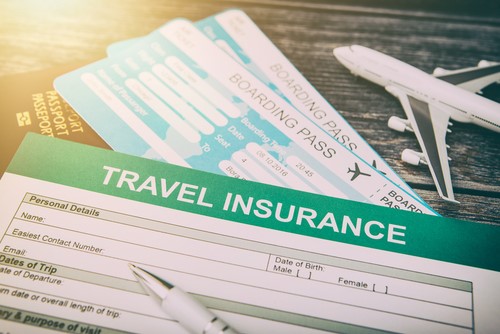You’re planning to travel to Singapore next month. Since most of your friends recommended you to visit this country, you obliged. You think that traveling can do wonders for your mind, body, and soul. And because of the stress you’re getting from home and work, you’re looking forward to this trip as your reward to yourself. After all, everyone needs to have a break once in a while, right? However, your expectations of stress-free and convenient travel can become the complete opposite if you experience emergencies along the way. How would you feel when your car had trouble on the way to the airport? Or when the weather suddenly changed after booking your tickets? Or when a family member has to be rushed to the hospital while you were traveling? If you’re traveling intentionally, it’s best if you do it with travel insurance.
Travel insurance is one kind of insurance which is intended to cover emergencies during your trip. These emergencies can include trip cancellation, lost luggage, medical expenses, flight accident and even other losses which you might have experienced while traveling. There are many companies which can offer travel insurance, but you should consider the following before deciding which travel insurance to pay for:
1. The type of coverage: Many companies offer travel insurance, but these companies have different types of coverage. As a customer, this information is something which you should carefully look into. For starters, consider the medical, trip cancellation and baggage loss policy of the travel insurance. You should also assess the default coverage and medical evacuation assistance of the travel insurance. These policies can extend your local medical care when you’re traveling to another country and can help you get home when you need additional medical assistance.
2. Determine what you need: If you’re eyeing to pay for travel insurance, determining what you need is key. Before you decide which travel insurance to get, consider your existing auto, homeowner and medical policies first. If you have health insurance, but your policy doesn’t cover you once you’re traveling overseas, it might be best if you also avail of a medical travel insurance. Comparing policies from your existing insurance and travel insurance can help you save from paying unnecessary costs.
3. Consider your trip: Where you’re going and what you’ll be doing there can help you decide which travel insurance to pick. If you’re traveling to a nearby state for the weekend and you’ll only need to hop on a train for 2 hours to get there, you probably won’t need travel insurance. But if you’re traveling internationally, like in Singapore, for weeks or months, travel insurance is a must. Keep in mind that the more days you spend in a new country, the higher the chances of experiencing baggage problems, medical emergencies, and travel delays are. As a customer, you should strive that all of these expenses during the trip can be covered as much as possible. You should work so your travel insurance can help you save money during the trip, not spend more.
4. Scout for options: Many companies can offer you travel insurance, and AXA SmartTraveller is just one. For you to end up getting the travel insurance tailored-fit for your needs and budget, scout for your options. Ask around from friends and family if they have had travel insurance in the past. Inquire from established companies for their travel insurance policies and compare prices. Doing this might take time, but this can ensure that you find the “perfect” travel insurance for you.
5. Read the entire policy before buying: When a document is written in fine prints, people tend to skip reading it – don’t commit the same mistake when you’re reading your travel insurance policy. Everything – yes, everything – in the policy should be read and understood. If you have any questions about the policy, ask the travel insurance agent about it. Don’t assume that you know everything as this can compromise your entire trip and even put your money to waste.
An Investment Worth Taking
There are many reasons why people decide to travel. Some travel because they’re seeking for adventure and adrenaline while others want to experience rest and relaxation in a new country. But regardless of the reason you want to travel, for sure, you want the experience to be memorable for all the right reasons. You want your travel to Singapore, or to any location, to become one for the books. Although travel insurance will require you to pay more from what you originally budgeted, it can help you achieve all of your travel goals. Travel insurance might be the only thing missing before you can finally bask in the sceneries of a new country!







